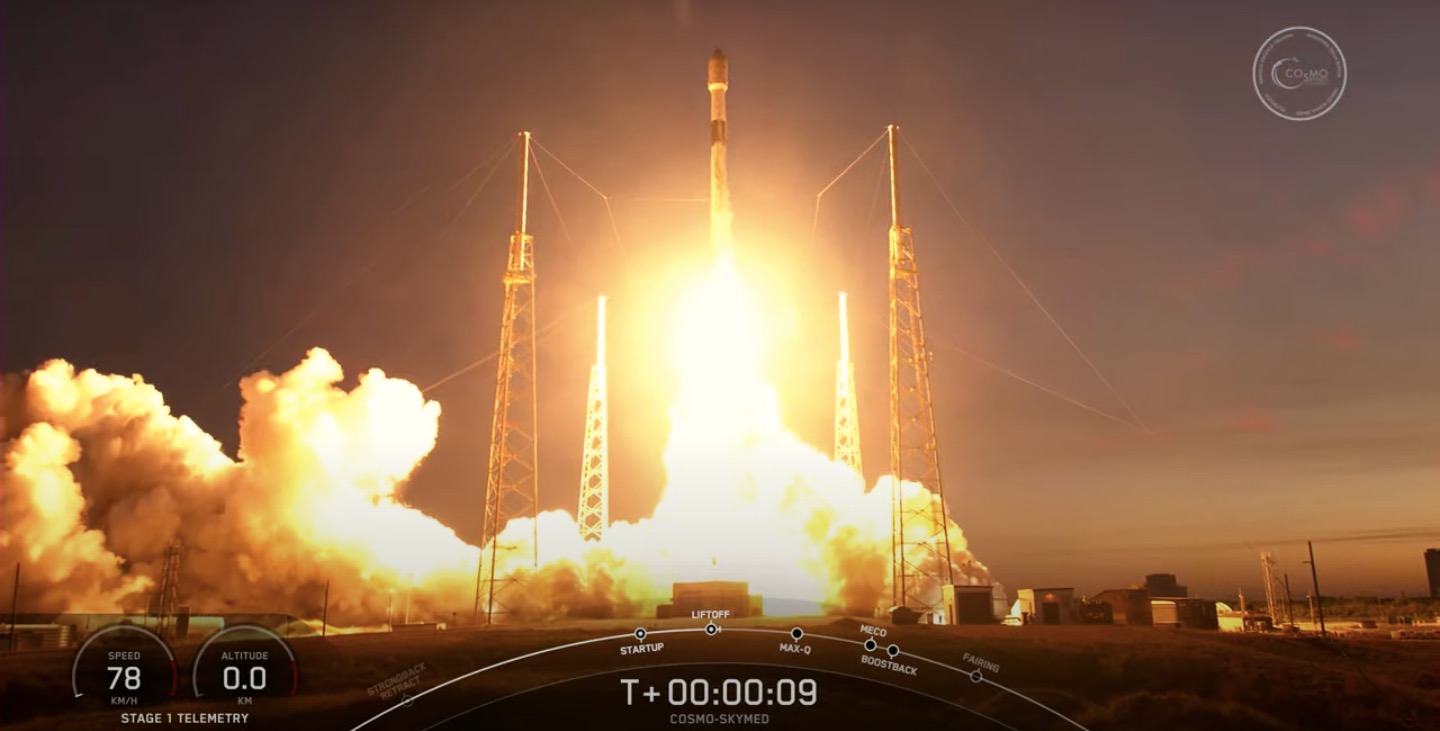SpaceX launches the Italian Earth observation satellite on Monday (Jan. 31) at 6:11 p.m. EST (2311 GMT). The Falcon 9 launches with the Cosmo-SkyMed Second Generation FM2 (CSG-2) satellite from Florida’s Cape Canaveral Space Force Station. The launch was initially scheduled for January 27 launch. However, due to various reasons, the launch finally took place after four attempts.

Everything worked out on Monday, however. The Falcon 9 launched on time, and its first stage came down for a soft landing at Cape Canaveral just under eight minutes after liftoff. Then the second stage continued powering CSG-2 to orbit, eventually deploying the satellite as planned 60 minutes after launch.
Watch launch of COSMO-SkyMed Second Generation FM2 → https://t.co/bJFjLCzWdK https://t.co/T1bjltSCe1
— SpaceX (@SpaceX) January 31, 2022
As the booster landing was the 104th that SpaceX was pulled off to date during an orbital mission, SpaceX production manager Jessie Anderson stated it during the webcast of Monday’s launch. Furthermore, this particular first stage had flown twice before, as a side booster on SpaceX’s massive Falcon Heavy rocket. Today’s mission marked the first time that a Heavy side booster had been reconfigured and launched alone as a Falcon 9, Anderson said.
Falcon 9’s first stage has landed on Landing Zone 1 pic.twitter.com/Vfc7UDaeun
— SpaceX (@SpaceX) January 31, 2022
Such reuse is key to SpaceX’s long-range goals, which center on lowering the cost of spaceflight enough to make ambitious exploration feats such as Mars colonization economically feasible. Indeed, SpaceX also aimed to recover the CSG-2 mission’s payload fairing — the protective “nose cone” that surrounds a payload during launch — Monday for reuse down the road, Anderson said.
Deployment of COSMO-SkyMed Second Generation FM2 confirmed pic.twitter.com/uT07VHNRrF
— SpaceX (@SpaceX) February 1, 2022
The Italian satellite
The Cosmo-SkyMed Second Generation program is funded by the Italian Space Agency, the Italian Ministry of Defense, and the Italian Ministry of Education, Universities, and Scientific Research. The system consists of two satellites, which are designed to observe Earth using synthetic aperture radar (SAR).
The European Space Agency wrote, “COSMO-SkyMed Second Generation[‘s] purpose is to monitor the Earth for the sake of emergency prevention, strategy, scientific and commercial purposes, providing data on a global scale to support a variety of applications among which risk management, cartography, forest, and environment protection, natural resources exploration, land management, defense and security, maritime surveillance, food, and agriculture management,”
The details about the satellites are, the first CSG satellite, CSG-1, launched atop an Arianespace Soyuz rocket from Kourou, French Guiana in December 2019. Which is currently operating in a sun-synchronous polar orbit with an altitude of 385 miles (620 kilometers). CSG-2 will also operate in the same orbit.
SpaceX is going to be very busy this year, especially with this current launch being delayed for various reasons. Sticking to the time as planned is required. Its robotic Dragon cargo spacecraft returned from ISS on January 24, and the company is planning to launch a batch of its Starlink internet satellites from Florida.
Credits- Space.com











